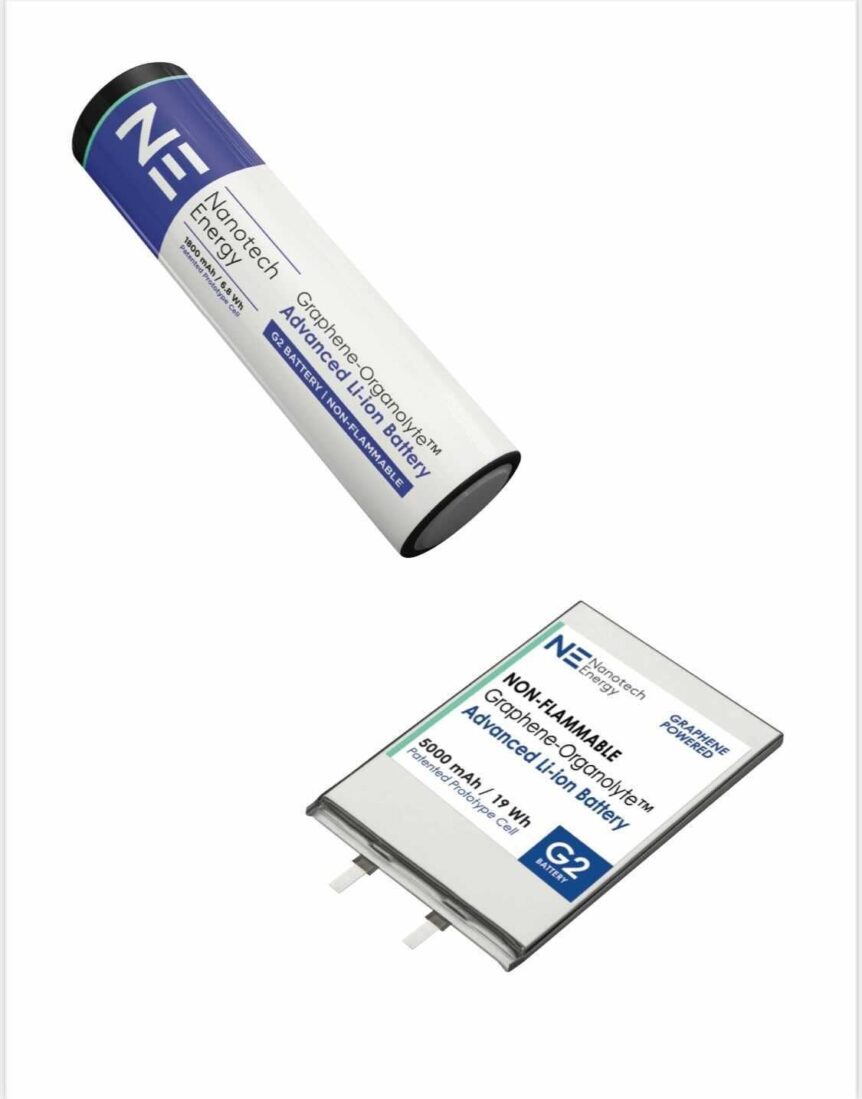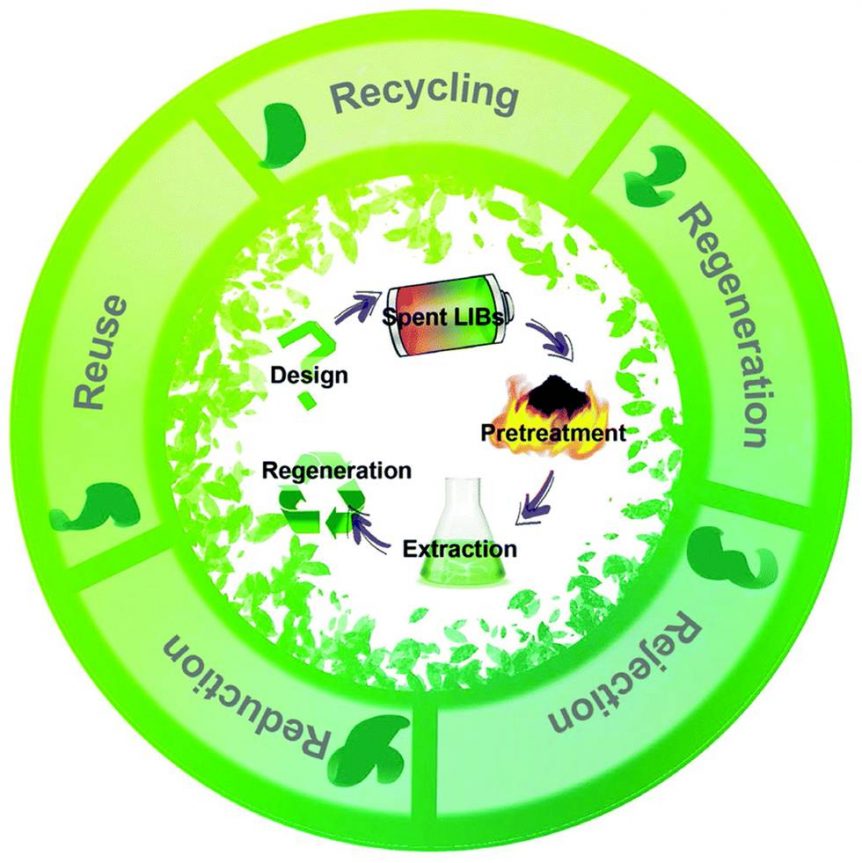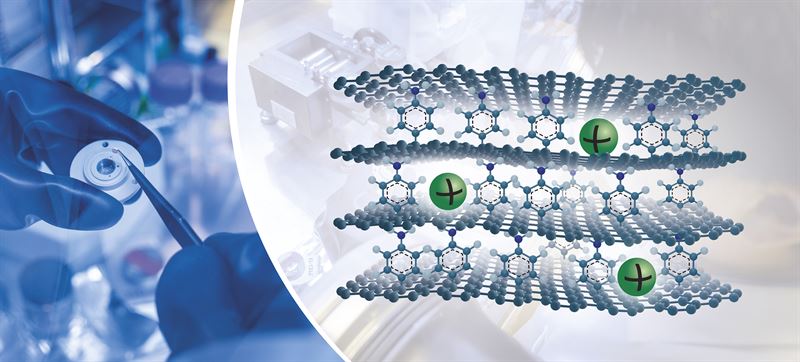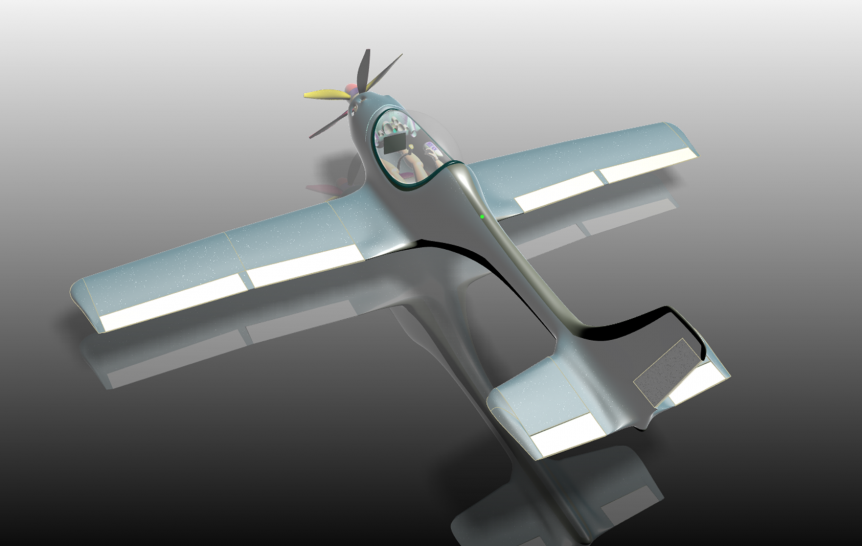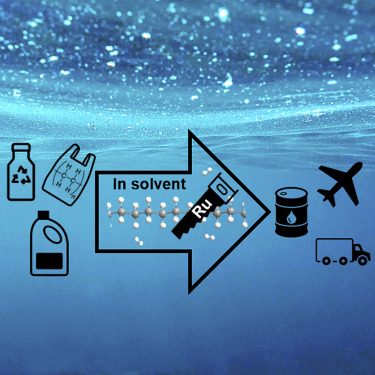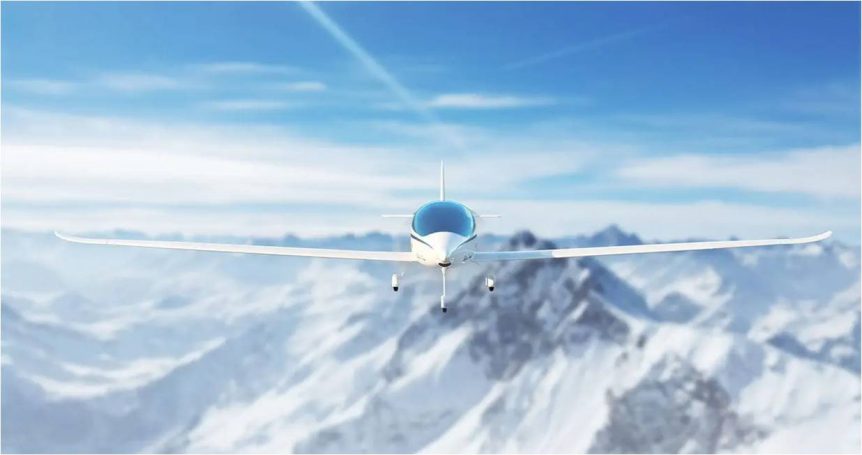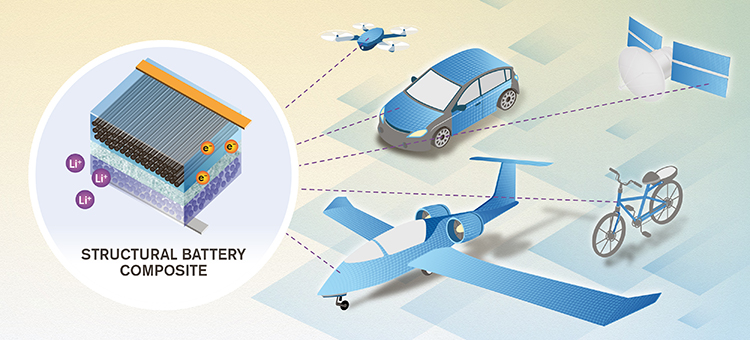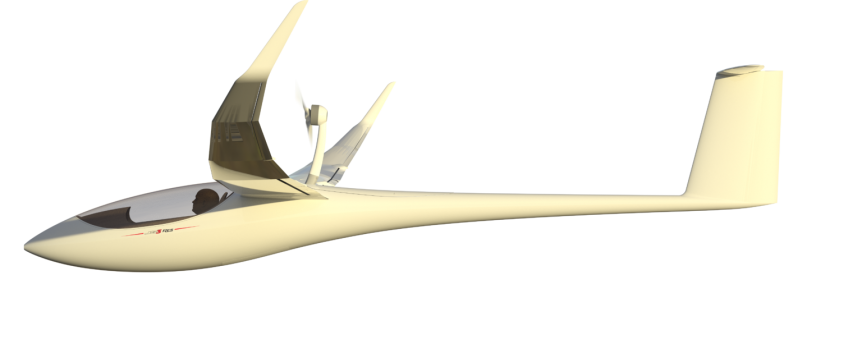We covered Washington Governor Jay Inslee’s visit to the Group 14 Technologies battery plant in Woodinville last year. Now the Group is getting attention from Porsche, among other funders. The startup company announced raising $400 million from investors including the Teutonic automaker. According to Reuters, part of those funds will be used to build a second battery materials plant in eastern Washington State. The company is now valued at over $1 billion, money which will help expand battery materials production for the silicon-lithium cell market. Silicon is a desirable material in batteries, capable of storing more energy than lithium or other metals. It has a major drawback, though. In expanding and contracting during charge-discharge cycles, it eventually deteriorates, crumbles, and brings the battery’s usefulness to an end. Dr. Yi Cui of Stanford University has tried various methods over the years to prevent such crumbling. His firm, Amprius, has developed a silicon nanowire anode that enables a battery with 450 Watt-hour …
Nanotech Energy – A “Solution” to the Lithium Battery?
Hot Pockets Introduced at this year’s CES (formerly the Consumer Electronics Show), Nanotech Energy’s Graphene-Organolyte™ Advanced Li-ion Battery (winner of a CES 2022 Innovation Award) merits a look. At least partly intended to stop battery fires, always hot news despite their relative rarity (compared to the 170,000+ petrol car fires every year), Nanotech explains its concern. “A battery, if shorted, could become a fireball bomb nearly impossible to extinguish using conventional techniques. In February 2018, the U.S. Consumer Product Safety Commission reported over 25,000 overheating and battery fire incidents involving more than 400 types of consumer products over a five-year period. Clearly, building safer batteries will be critical for the future of energy storage technology.” Keep in mind that “consumer products” include cell phones, laptop computers, and even e-cigarettes, as demonstrated here. These dangers show the need for a safe solution. Nanotech promotes its Organolyte non-flammable electrolyte as that solution, noting it will not support an open flame. Dr. Jack …
Recycling Lithium Batteries – Cheaper, Better, Greener?
We would all love less expensive batteries that are safe, reliable, and possibly even better performing than what we have now. What if recycling our throw-aways gave us “new” batteries with refined materials that improve their performance? A current paper from the Royal Society for Chemistry may hold a key to producing such cheaper, better batteries. The complete entry expands on the idea of reclaiming materials in used batteries in an efficient, cost-effective way. The findings come to light with good timing, considering recent concerns over lithium mining and availability. Conflicted over Conflicts Battery materials are selected for factors such as their inherent ability to shuttle ions between a cathode and anode, the positive and negative poles of a battery. Electrodes may contain lithium, cobalt, and nickel, among other elements. Cobalt, for instance, is a so-called “conflict mineral,” sourced from places like the Democratic Republic of the Congo using child labor. Such minerals are often mined using “artisanal and small-scale …
Graphene Sodium-Ion Batteries with 10X Energy
Graphene, applied in a sodium-ion battery may herald inexpensive alternatives to lithium-ion cells. Scientists are exploring ways of making batteries not only more energy-dense, but also less costly. Sodium, a primary ingredient in table salt, is one possibility. It’s also abundant without too much effort required to find it. On the other hand, easily-obtainable lithium may become in short supply at a time when the world is clawing its way into the earth searching for more. Sodium is the sixth most abundant element on earth, making up about 2.6 percent of the planet. It’s never found free in nature, but always as part of something like the salt (NaCl) one can see it crusting over from evaporating bay water near Moffett Field, California, or in the Great Salt Lake in Utah. New Atlas reports, “These sodium-ion batteries would function much like today’s lithium-ion batteries, generating power by shuttling ions between a pair of electrodes in a liquid electrolyte, but as …
Would an Electric LSA Kit Appeal to You?
Is there a need and desire for an electric light sport aircraft (LSA) kit that is inexpensive to own, operate, and maintain? Electric flight already offers that possibility, and if kits were available to further lower costs, we could see a new way to achieve low-cost flight. The LSA designation qualifies a builder to take advantage of LSA’s lighter constraints. A good friend who happens to have designed an electric Light Sport Aircraft (LSA) a few years ago let the project lapse because of the need to tend to other business interests. He wants to know if there’s a market for a new, improved version of his original concept – an electric LSA that would fly for considerably less in operating costs than an internal-combustion model, and that would provide reliable, safe sport flying. He provided the following survey to the Experimental Aircraft Association, which created the link at the end of this entry. His comments follow. “This survey is …
Valuable Materials and Fuels from Trash
The Earth we inhabit struggles in an ever-tightening race between being overcome with its own trash and cleaning up after itself. Two stunning approaches to turning trash and waste into valuable materials and fuels could help us win that race. Graphene Dreams in a Flash Bigthink.com leads with the news that, “Graphene typically costs $200,000 per ton. Now, scientists can make it from trash.” This “insanely useful” product is difficult to produce, making it a luxury for many applications – until now. Graphene is insanely useful, but very difficult to produce — until now. Dr. James Tour and his Rice University students have created a way to produce graphene in large quantities in a literal flash. This technique, Flash Joule Heating, was discovered in Dr. Tour’s laboratory by graduate student Duy Luong. Also the lead author on the paper in the journal Nature, Luong “Did not expect to find graphene when he fired up the first small-scale device to find …
Elektra Trainer – Flight Training for the New Age
A Decade of Development A modified version of Elektra One, flying since 2011 and certified in the German ultralight class, Calin Gologan’s Elektra Trainer could provide affordable flight training with lower operating costs. Calin displayed Elektra One at the 2012 AirVenture show in Oshkosh, Wisconsin, flying daily on the power of its solar-charged batteries. The company details its background. ” Elektra Solar GmbH is a spin-off from the German Aerospace Center (DLR), Institute for Robotics and Mechatronics. The roots of the company go back to 2011. This year PC-Aero GmbH was founded in 2011 by Calin Gologan. Elektra One electric aircraft was the first product flying in March 2011. “In the same year, we [received] the Lindbergh Prize for Electric Aircraft Vision. Elektra UAS GmbH was founded in 2012 for unmanned systems and application. Both companies merged in 2016 under the new name Elektra Solar GmbH. “In 2015 we flew with the Elektra One Solar for the first time over …
Massless Batteries for Aircraft?
What if the weight of the batteries in an electric airplane could virtually disappear? Researchers at Chalmers University of Technology in Gothenburg, Sweden have come up with an improved structural battery that exceeds the results of earlier research. So-called “massless batteries,” although not as energy dense as cylindrical or pouch lithium-ion batteries, could be worthy substitutes. The idea of making airplanes from materials that would provide energy from their inherent properties has been of interest for years. Your editor wrote an article on “The Grand Unified Airplane” for Kitplanes magazine in 2013 based on the idea of combining solar power, piezoelectric flexing of wings, and structural batteries. The ultimate goal was to create a machine that would move through the air on the energy of flight itself. This might seem an unreachable fantasy, but material scientists are bringing us closer to the dream. Headlining their report with a rather non-academic boast, Chalmers University promotes its, “Big breakthrough for ’massless’ energy …
Peter Sripol’s Mk. IV is Paramotor Powered
Peter Sripol creates interesting ultralight aircraft, among other, sometimes scary projects. His latest is pulled along by a paramotor motor. Because of the small aircraft’s low and slow performance, the low-power (and very low noise) motor seems more than sufficient to the task. His fourth design, the Mk IV has no ailerons, much like an earlier ultralight, the Skypup. After initial tests showed shortcomings with the Mk. IV, quickly modified wings allowed Peter to return to the air quickly. As he explains, there won’t be plans for this airplane because it has too many not as yet time-tested innovations. The hot-wire-cut foam structure and vinyl wrapped wings are an unknown in terms of longevity, so it’s probably best to let Peter make his determination on that. Note the machine seems to be remarkably quiet, the OpenPPG motor drowned out by propeller noise. (That’s also low because of the e-Prop’s design.)* When Peter is able to shout down to his father …
Two New Electric Sailplanes
Two electric sailplanes come from different ends of the soaring spectrum and each shows its own unique character. Their differences are as noteworthy as their geographic separation. Birdy Birdy is a single-seat, electrically powered motor glider that fits the European Union 120 kilogram class. The 264-pound empty weight puts it 10 pounds above America’s FAA Part 103 254-pound limit. But Euro craft in that category are not as limited in top or cruise speed. Birdy’s light weight required clever arrangement of components to enable a maximum takeoff weight of 280 kilograms (616 pounds) and pilots up to 1.95 meters (6’ 5”) tall. Its 13.5-meter (44.29-foot) wingspan carries only 13.9 pounds per foot, enabling 40:1 glide ratio at around 90 kilometers per hour (55.8 mph). Its 8.3 square meter (89.3 square foot) wing area lifts only 6.89 pounds per square foot, enabling a 63 km/hr (39 mph) stall speed with flaps. Birdy can top out at 180 km/hr (111.6 mph), well …


